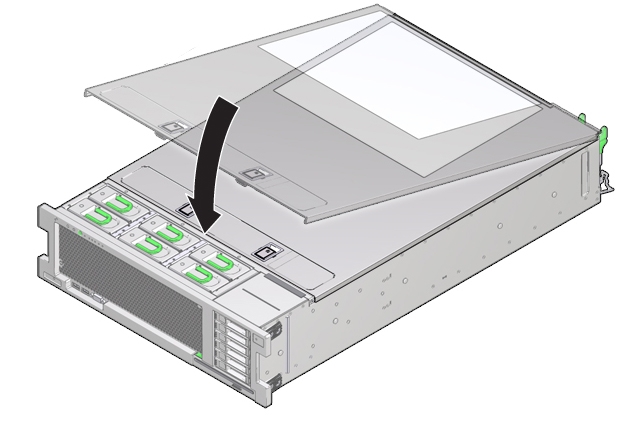Troubleshooting Power Issues
If your server does not power on, the cause of the problem might be one of the following:
AC Power Connection

The AC power cords are the direct connection between the server power supplies and the power sources. The server power supplies need separate stable AC circuits. Insufficient voltage levels or fluctuations in power can cause server power problems. The power supplies are designed to operate at a particular voltage and within an acceptable range of voltage fluctuations (see the Installation Guide). A four-CPU configured server needs to operate at 200-240 VAC, while a two-CPU configured server can operate at either 100-127 VAC or 200-240 VAC. For more information about the processor subsystem, see Processor Subsystem.
Action: Check that both AC power cords are connected to the server and check that the correct power is present at the outlets. If necessary, monitor the power to verify that it is within the acceptable range. You can verify proper connection and operation of a power supply by checking its indicator panel.
A properly installed PSU has its green AC OK indicator lit. A properly functioning PSU has its green power (DC) OK indicator lit and its amber Service Action Required indicator off.
Prevention: Use the AC power cord retaining clips and position the cords to minimize the risk of accidental disconnection. Ensure that the AC circuits that supply power to the server are stable and not overburdened.
Power Supplies (PSUs)

The server power supplies (PSUs) provide the necessary server voltages from the AC power outlets. If the PSUs are inoperable, unplugged, or disengaged from the internal connectors, the server cannot power on.
Action: Check that the AC cables are connected to both PSUs and that the PSUs are operational (the PSU indicator panel should have a lit green AC OK indicator). If not, ensure that the PSU is properly installed. A PSU that is not fully engaged with its internal connector does not have power applied and does not have a lit green AC OK indicator.
Prevention: When a power supply fails, replace it immediately. To ensure redundancy, the server has two PSUs. This redundant configuration prevents server downtime, or an unexpected shutdown, due to a failed PSU. The redundancy allows the server to continue to operate if one of the PSUs fails. However, when a server is being powered by a single PSU, the redundancy no longer exists, and the risk for downtime or an unexpected shutdown increases. When installing a power supply, ensure that it is fully seated and engaged with its connector inside the drive bay.
A properly installed PSU has its green AC OK indicator lit. A properly functioning PSU has its green power (DC) OK indicator lit and its amber Service Action Required indicator off
Top Cover

The server top cover helps the cooling subsystem maintain pressure areas within the server. The top cover also protects against damage to internal components and accidental exposure to hazardous voltages. For these reasons, the server top cover is includes an interlock switch to server power.
The interlock switch has two components. One component is mounted inside the server on the housing for power supply, PS1, and includes a wire that plugs into the motherboard. The other component is mounted on the underside of the top cover. When the cover is installed these two components align, closing the switch and allowing power to the server. When the cover is removed, the switch opens removing power from the server. If the cover is removed while the server is powered on to full power mode, power to the server is immediately switched off.
Action: If the server does not power on, check that switch is intact and properly aligned. Ensure that the server top cover is in place and sits flat and snug on top of the server. Ensure that the interlock switch components have not been damaged, removed, or misaligned.
Prevention: After removing the top cover, take care that the cover does not get bent, or that the component on the underside is not damaged. When servicing the server, take care that the internally mounted interlock switch component does not get damaged or misaligned. Never operate the server without the top cover installed.